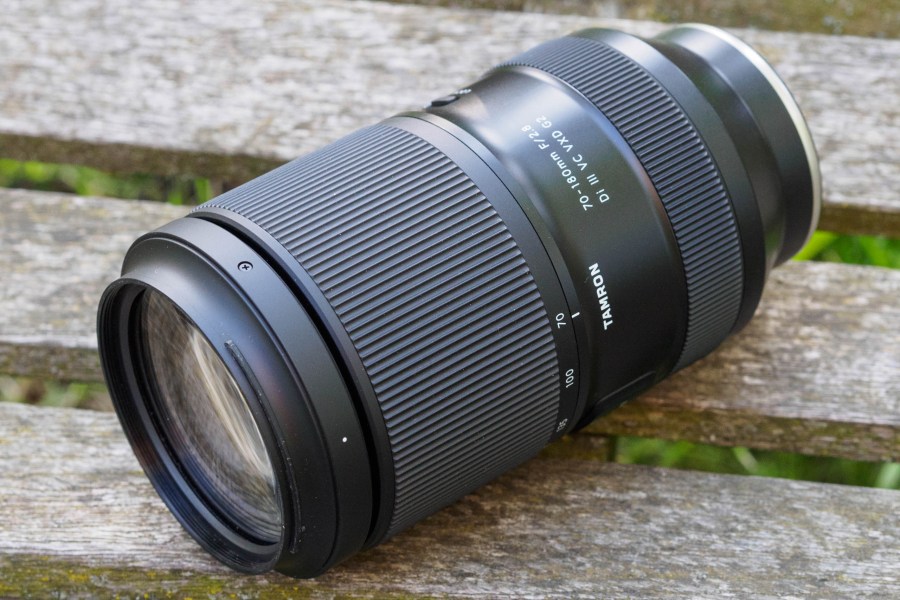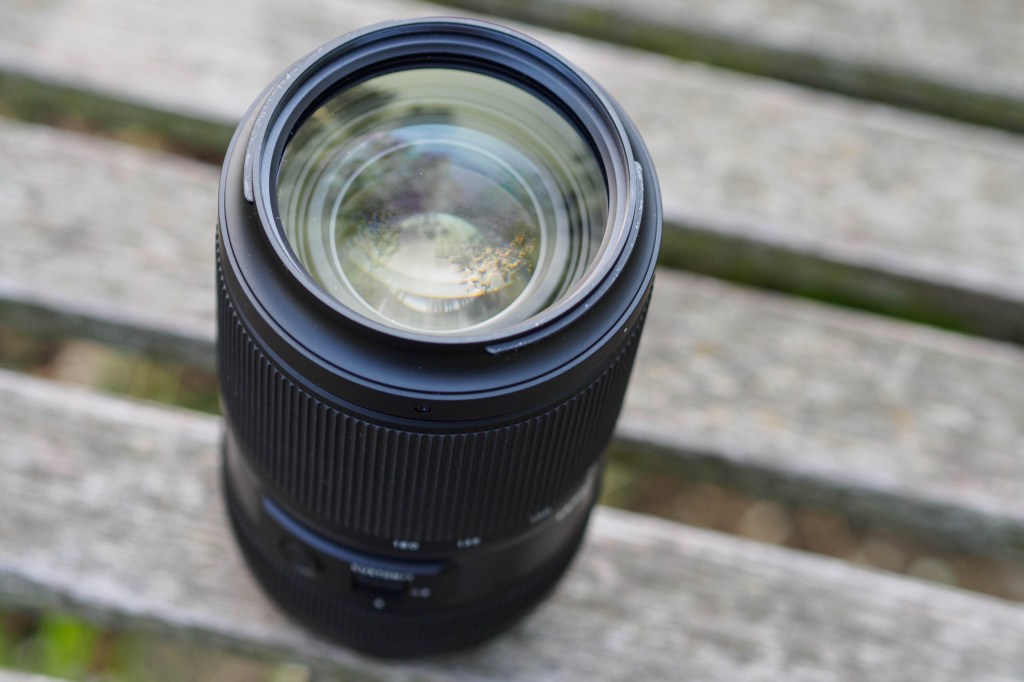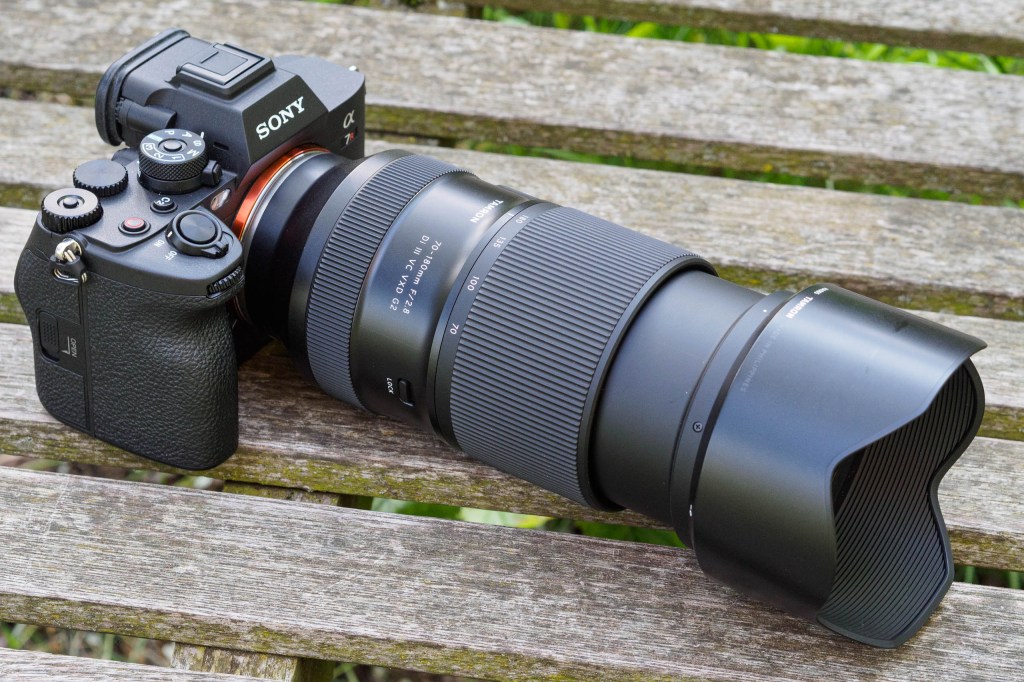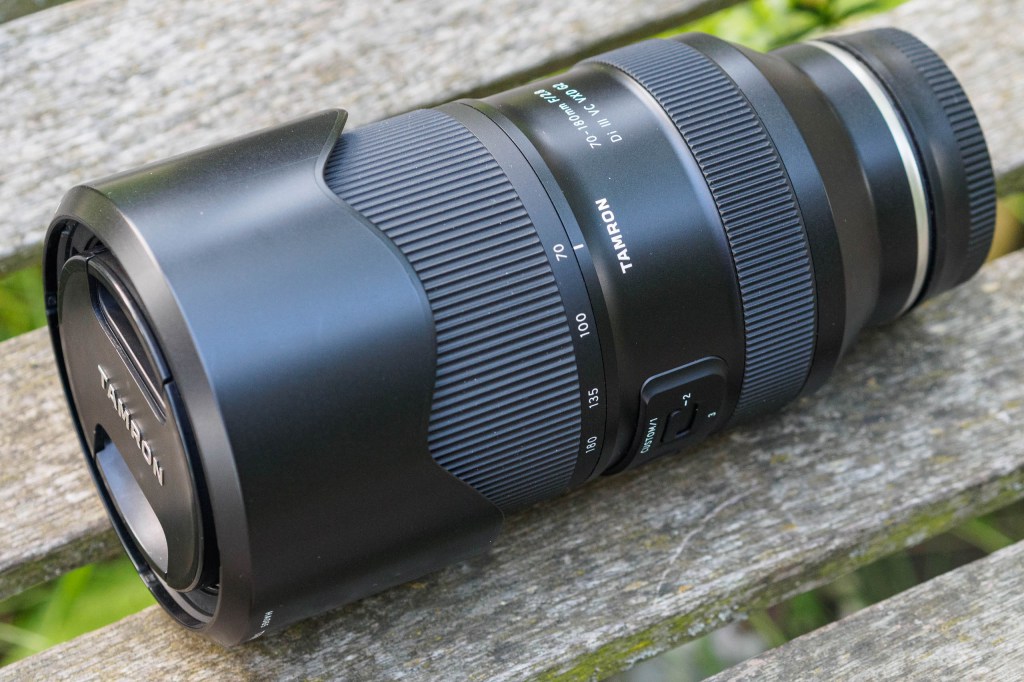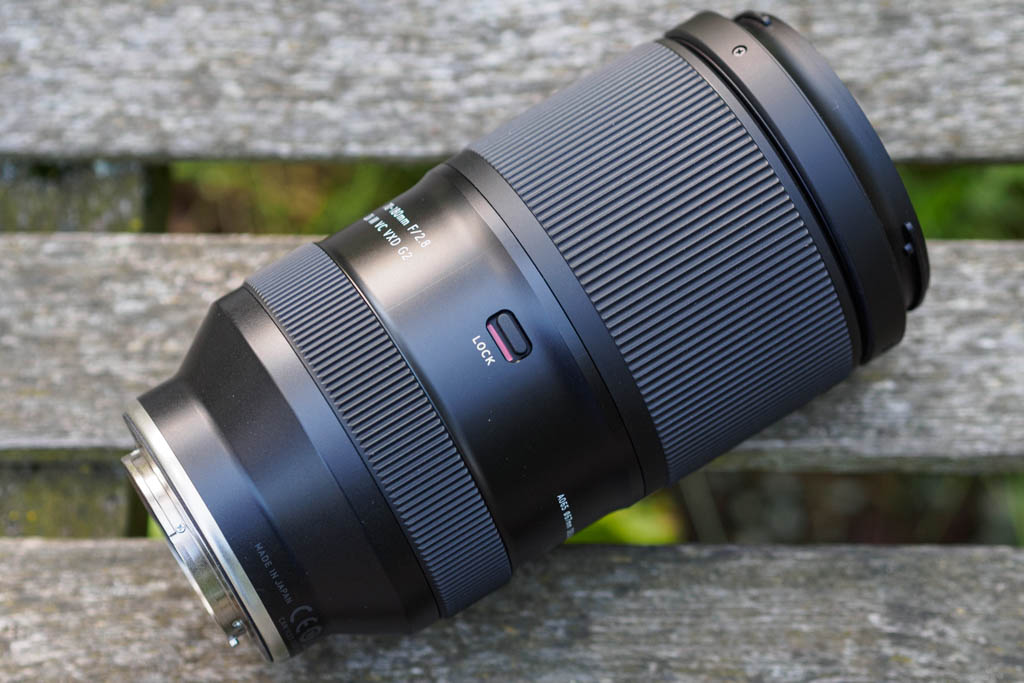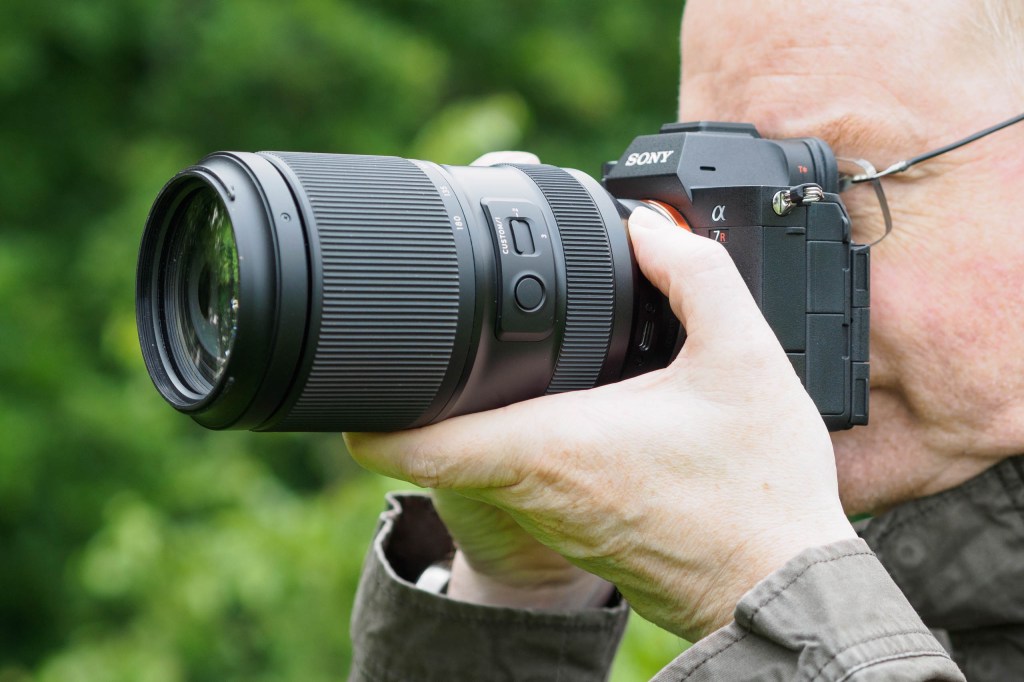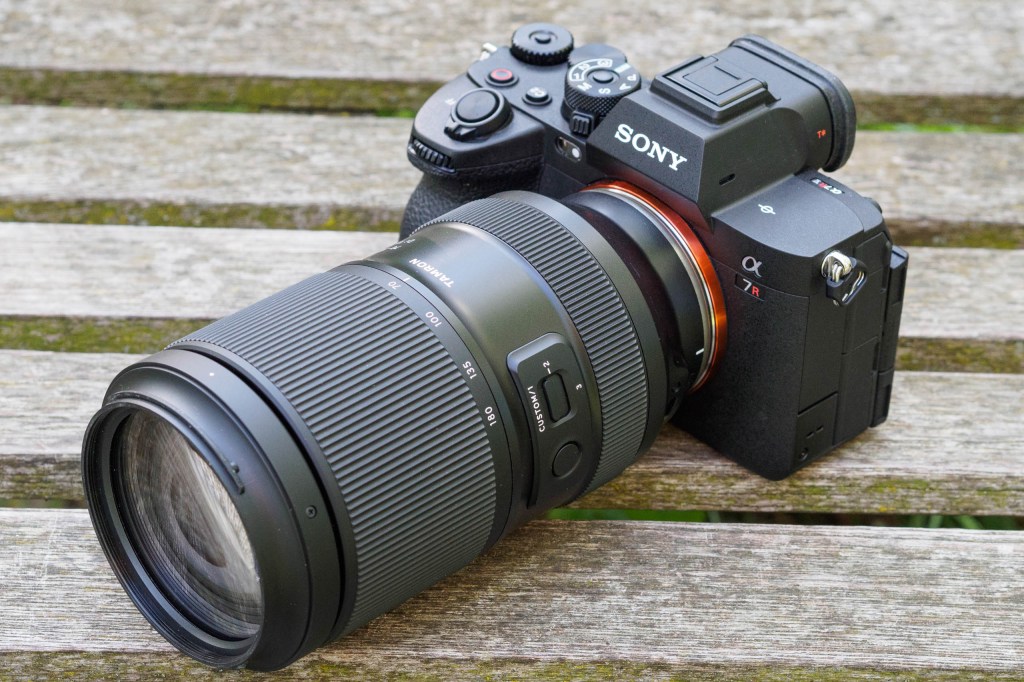Amateur Photographer verdict
The Tamron 70-180mm F/2.8 Di III VC VXD G2 provides excellent image quality in a portable package, making it a great alternative to conventional 70-200mm f/2.8 zooms.- Superb sharpness across the frame at all focal lengths
- Very portable for an f/2.8 telezoom
- Fast, silent autofocus
- USB port for customisation and firmware updates
- Fairly strong vignetting in uncorrected files
- No dedicated aperture ring
If the first lens any photographer needs is a standard zoom, the second is probably a telephoto zoom. Here, there’s generally a compromise to be made between maximum aperture on the one hand, and size, weight, and price on the other. Tamron’s 70-180mm F/2.8 Di III VC VXD G2 aims to give the best of both worlds, offering a large f/2.8 maximum aperture, but with the portability and affordability more usually associated with f/4 optics. This promises to make it one of the best Sony E-mount lenses available.
Tamron 70-180mm F/2.8 Di III VC VXD G2 at a glance:
- Large aperture telephoto zoom
- For full-frame cameras
- Built-in optical stabilisation
- Minimum focus distance 30-85cm
- 67mm filter thread
- 156.5mm x 83mm, 855g
- Sony E mount
This second-generation lens is an update to the original Tamron 70-180mm F/2.8 Di III VXD, which we liked a lot. Its most eye-catching update is the addition of optical stabilisation, which comes with a relatively small increase in bulk. There’s not a huge hike in price, either, with the G2 optic costing $1299 / £1329 at launch.
Tamron currently makes the lens solely for Sony E-mount, and to appreciate its value proposition, we just need to look at the alternatives. Sony’s FE 70-200mm F4 G OSS II is similar in size, but a stop slower and considerably more expensive, while its FE 70-200mm F2.8 GM OSS II counts as a benchmark optic but is double the price. The other third-party alternative is the excellent Sigma 70-200mm F2.8 DG DN OS Sports, but again we’re looking at a considerably larger lens at a higher price.
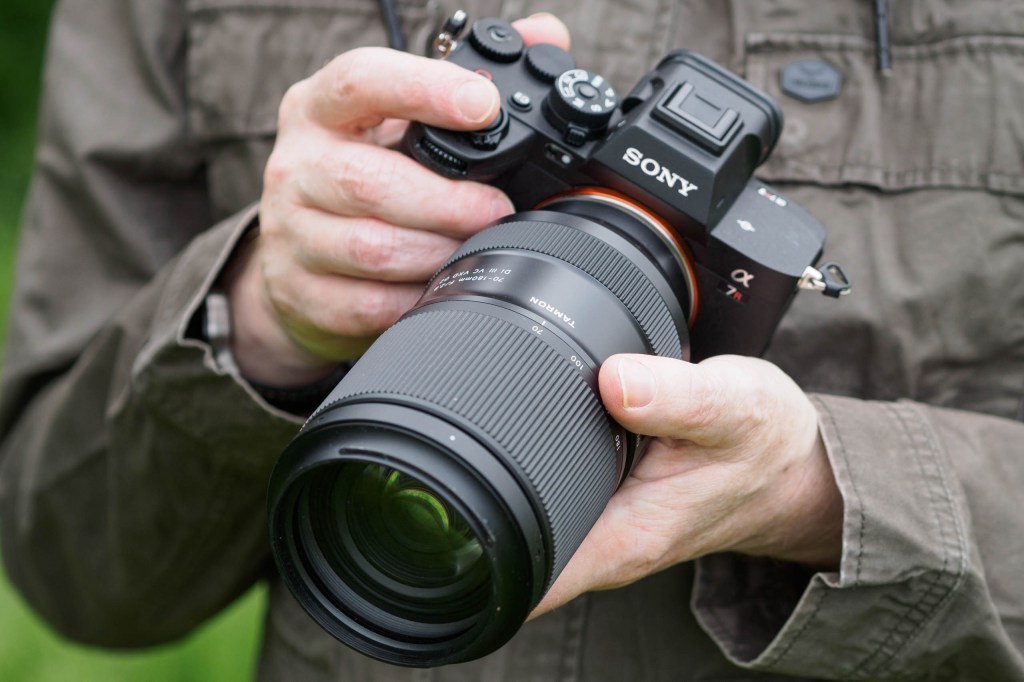
On paper, the most obvious disadvantage of the Tamron 70-180mm compared to those 70-200mm zooms is the slightly shorter long end. But it’s not a big difference, and often, we can just crop our images to match. But are there any other, more significant drawbacks?
Tamron 70-180mm F/2.8 Di III VC VXD G2: Features
With this lens, Tamron’s main aim has been to minimise the bulk. Unusually for its class, it employs an extending, rather than internal zoom mechanism, and employs a 67mm filter thread that’s shared with many of the firm’s other E-mount lenses. It’s designed for full-frame cameras, but can also be used on APS-C A6000-series models, giving a 105-270mm equivalent range.
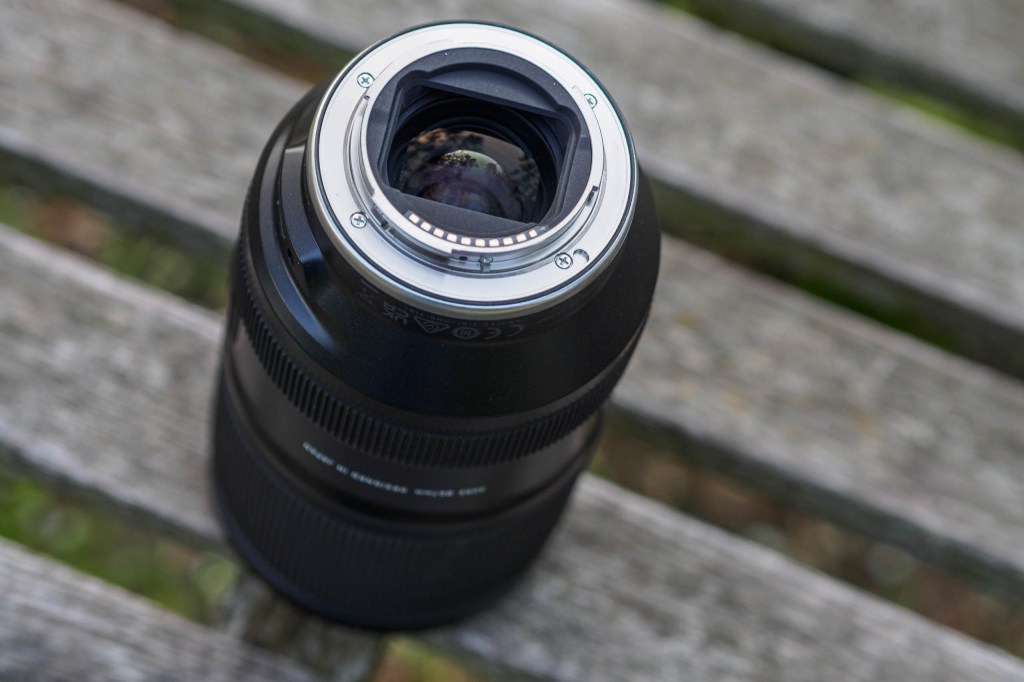
Optically the lens employs an entirely new design, with 20 elements in 15 groups. This includes three low dispersion (LD) glass elements and one extra-low dispersion (XLD) element to combat colour fringing. What’s more, there are no fewer than three aspheric elements – two moulded glass, one hybrid – to maintain image sharpness all the way across the frame. Tamron’s BBAR-G2 (Broad-Band Anti-Reflection Generation 2) coating is on board to suppress flare and ghosting.
Nine curved blades are used to form the aperture, with settings available down to f/22. Focusing is internal, driven by Tamron’s VXD (Voice-coil extreme-torque Drive) linear motor. The minimum focus distance ranges from 30cm to 85cm, equating to maximum magnifications of 0.38x and 0.21x at the 70 and 180mm settings, respectively.
Optical stabilisation is built in to suppress image blurring due to camera shake. This works in concert with the in-body image stabilisation in most Sony E-mount cameras. Tamron says that at focal lengths less than 100mm, the lens employs AI technologies to optimise the system’s response during video recording.
The barrel boasts moisture-resistant construction, with a series of seals around the controls and moving parts. A water- and oil-repellent fluorine coating has been applied to the front element to help keep it clean. Tamron includes a deep petal-type hood that reverses snugly over the barrel when not in use.

There’s even a built-in USB-C port, which allows the lens to be connected to a computer or Android smartphone. Using the free Tamron Lens Utility program, you can then update the firmware and customise the controls to your preferences. Some users might be concerned by the fact that there’s no cover to the USB-C port, but that shouldn’t stop it being fully sealed (just as on flagship smartphones).
Tamron 70-180mm F/2.8 Di III VC VXD G2: Build and handling
What’s most striking about the Tamron 70-180mm f/2.8 is just how compact it is compared to its 70-200mm rivals. At 83mm in diameter, 156.5mm in length and 855g, it’s about four-fifths of the size and weight of the Sony FE 70-20mm F2.8 GM OSS II. I tested it on the full-frame Sony Alpha A7R V and found them to give a very agreeable combination.
The broad zoom ring is positioned towards the front of the barrel, and perfectly placed for operation by your left hand. A small switch on the side of the lens allows you to lock the zoom at its 70mm position; otherwise it has a slight (but not particularly problematic) tendency to extend under its own weight while you’re carrying it around.
The manual focus ring is found much closer to the camera body, so you shouldn’t ever mix up the two while shooting. Unlike its rivals, the lens doesn’t have an aperture ring.
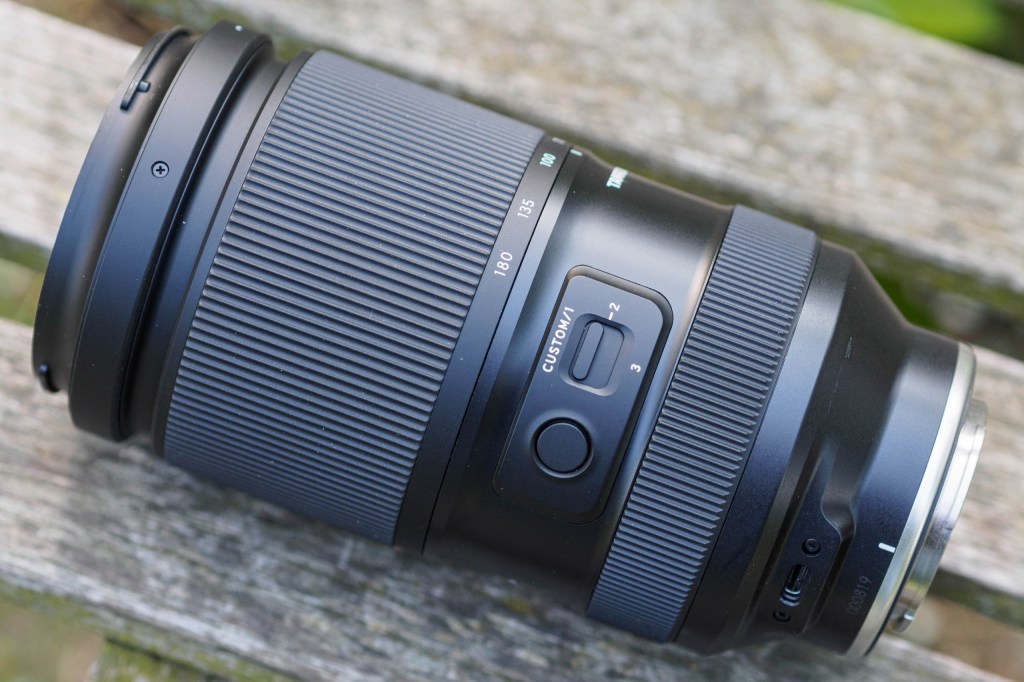
On the left side of the barrel, you’ll find a function button placed just below a three-position Custom switch. This is where Tamron Lens Utility comes in, as you can set the button to perform different tasks depending on the switch’s position.
I set it up as an AF/MF toggle in position 1; AF hold in position 2; and to reassign the manual focus ring to setting the aperture in position 3. This is a neat means of making best use of the relatively limited control set.
Tamron 70-180mm F/2.8 Di III VC VXD G2: Autofocus
I’ve been impressed by the Tamron 70-180mm f/2.8 G2’s autofocus performance. It’s rapid, accurate, and essentially silent. The lens also plays nicely with all of Sony’s advanced autofocus features, including subject recognition and tracking.

Click on any sample image to see a full-resolution version
In practical use, pretty much every shot I took in AF-S mode was perfectly in focus. Much the same is true with continuous autofocus and tracking, too. Shooting relatively large, predictable subjects such as trains at 10fps, only a few frames were even slightly out of focus.
As tends to be the case, though, I saw more slightly soft shots with receding subjects compared to those approaching the camera. But they’d still be perfectly usable for most purposes.
In fact, the only time the lens really struggled was with unpredictable, skittish wildlife. But if this sort of thing is your speciality, you’ll probably be using a longer lens anyway.
The focusing also does a good job during video recording, adjusting focus smoothly and precisely, while not impinging noticeably on your soundtrack. It’s worth noting, though, that only Sony’s own lenses are capable of keeping up with continuous focusing during 4K 120p recording (or 120fps shooting on the Alpha A9 III camera).

Manual focus also works very nicely when you need it, with a precise, intuitive response. Here, you can use the Tamron Lens Utility to change the behaviour of the focus ring. I switched it from its default behaviour to linear operation, like Sony’s own lenses, shifting from minimum focus to infinity over a 180° turn.
Tamron 70-180mm F/2.8 Di III VC VXD G2: Performance
So the Tamron 70-180mm f/2.8 G2 handles and focuses well, but what about image quality? This may be a relatively affordable lens as fast telezooms go, but it’s still not cheap, so it needs to perform well. Thankfully that’s exactly what you get, with the lens delivering stunningly sharp, detailed images with attractive defocused backgrounds.

In fact, after examining the hundreds of images I’ve shot with the lens, I’m struggling to identify anything I’d consider to be a genuine flaw.
At normal shooting distances, sharpness is absolutely superb through the zoom range, even at f/2.8. On the A7R V’s 60MP sensor there’s just so much detail to be seen all the way across the frame. Of course depth-of-field is shallow with this kind of telephoto zoom, so you need to get focus absolutely right. This is particularly accentuated if you stare at 60MP files at 100% onscreen.

If I’m being super-picky, there is, perhaps, just a hint of softness in the extreme corners of the image, especially at 200mm. But it’s definitely not going to spoil your photos, and the entire frame gets pin-sharp when you stop down to f/4 or f/5.6.
As usual for a modern lens, Tamron expects you to use the camera’s built-in software corrections for distortion, vignetting and chromatic aberration. If you do so, you’ll get superbly clean images with no hint of colour fringing, and straight lines rendered perfectly at the edges of the frame.

Turn off the corrections, though, and you’ll see mild pincushion distortion at 70mm that gets progressively more pronounced as you zoom in. For many subjects this won’t matter one bit, but personally I’d keep distortion compensation switched on.
Unsurprisingly, vignetting is also very noticeable when left uncorrected, with pronounced darkening in the corners at all focal lengths when the aperture is left wide open. But it decreases significantly at f/4, and disappears altogether at f/5.6. Enable in-camera compensation and the effect is fixed at a stroke, in both JPEG and raw files.

However, it’s worth knowing that Adobe software appears to assume you don’t have vignetting compensation enabled, and will apply its own correction regardless. This can result in double correction and overly bright corners, unless you reset the slider to zero.
The lens’s impressive performance extends to close-up shooting, too. Here, you’ll get the best results at the 70mm position. Not only does this deliver the highest magnification, but it also provides the sharpest images, particularly at larger apertures. You get a pretty comfortable working distance, too, of about 12cm from the front of the lens to the subject.

About the only time you’ll observe even a slight drop-off in sharpness is when shooting at the telephoto end, towards the minimum focus distance, and at large apertures. Then when examining your image files close-up onscreen, you’ll see a slight ‘glow’ effect around in-focus areas that’s characteristic of spherical aberration.
But even then, the trade-off is beautifully blurred backgrounds that can really help your subject stand out.

On this note, out-of-focus areas are, in general, rendered very attractively indeed. At f/2.8 there’s a noticeable ‘cats-eye’ effect in the corners of the frame, as a consequence of that vignetting. This can result in a swirly appearance in certain situations, which can sometimes be interesting, but distracting at others. Overall, though, the bokeh is very attractive indeed.

Tamron’s image stabilisation works well, too. With this kind of lens, I wouldn’t necessarily consider it primarily a means of shooting at slow shutter speeds, but instead a way of stabilising your compositions and keeping images pin-sharp at marginal shutter speeds. In this respect, it does its job well.
Tamron 70-180mm F/2.8 Di III VC VXD G2: Our Verdict
I’ve been really impressed by the Tamron 70-180mm F/2.8 Di III VC VXD G2. It offers an intriguing alternative to conventional 70-200mm f/2.8 zooms, giving excellent image quality in a very portable package. Its autofocus performance is impressive, too, while the addition of optical stabilisation is an attractive upgrade over its predecessor.
As for flaws, there really aren’t very many. That slightly shorter long end isn’t a huge drawback in practice, and to me it’s a perfectly acceptable trade-off for the smaller size. You don’t get a dedicated aperture ring either, but I suspect most Sony users are well used to working without one. The clever custom switch and button also help to make up for the relative lack of controls.

Together, this all makes the Tamron 70-180mm f/2.8 G2 a really interesting prospect for those who like the idea of fast telezoom but are put off by the bulk and cost. It’s arguably best suited to photographers who tend more towards shooting portraits and details, rather than sports and wildlife. Technically it may not be quite as good as the Sony and Sigma 70-200mm f/2.8 lenses in some respects, but it’s very close indeed, and at a more palatable price. For a great many E-mount users, this might just be the perfect telephoto zoom.

Follow AP on Facebook, Twitter, Instagram, YouTube and TikTok.
Tamron 70-180mm F/2.8 Di III VC VXD G2: Full specifications
| Price | $1299 / £1329 |
| Filter Diameter | 67mm |
| Lens Elements | 20 |
| Groups | 15 |
| Diaphragm blades | 9 |
| Aperture | f/2.8 – f/22 |
| Minimum focus | 30-85cm |
| Length | 156.5mm |
| Diameter | 83mm |
| Weight | 855g |
| Lens Mount | Sony E |
| Included accessories | Caps, hood |

